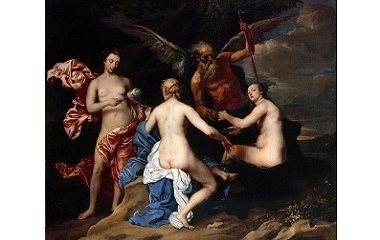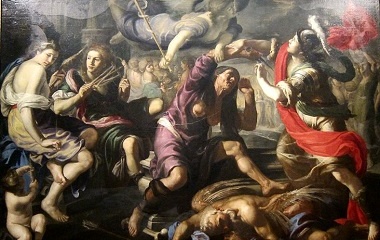Who Are the Fates?
The Fates are three female deities, sisters, who control the fate and longevity of man and the gods. They are also known as the Moirai, which means parts or shares and lived on Mount Olympus in Zeus’ palace. Clotho was the sister who spun the thread of life. Lachesis measured the thread and metered out a person’s allotted lifespan, and Atropos determined how each person would die and cut their life thread with her shears.
Since the sisters were closely associated with death, they were often related to the Erinyes; also crones who took vengeance on anyone that broke an oath, and Keres; female spirits of death. In Roman mythology, the Fates were known ironically as the Parcae, meaning the sparing ones. The concept of fate they represent is comparable in other cultures to concepts such as Egyptian Maat; a sense of balance, justice, and truth, or the Vedic Rta; commonly understood as the cosmic order.
Origin
In Hesiod’s Theogony, the poet depicts the Moirai as daughters of Themis and Zeus. He describes them as weaving the thread of life, which may be imbued with things such as sadness, fortune or perhaps many offspring. In Homer’s works, he refers to parts as moira and in the Odyssey links a personification of moira to the spinners.
Legends and Stories
Once a baby was born, three days would pass before the Moirai would visit to determine the destiny of the infant. They would spin out the baby’s life thread according to the will of the gods. Though the crones determined fate, man’s fate was not wholly unchangeable. Zeus could save those already on the cusp of their fate. Man could also influence their own fate, to a degree. The Fates were said to control the destiny of the Gods too, possibly even Zeus, making them feared for the power they yielded.
Zeus’ son, Heracles, sought the help of the Moirai when Chiron, an immortal centaur was wounded in battle. He was accidentally struck by an arrow from Heracles. Chiron was in unbearable pain though as the arrow was poisoned with the venom of the nine-headed serpent, Hydra. The Moirai allowed Chiron to give up his immortality whereupon he joined the other gods on Mount Olympus.
Worship
The Fates had a cult following in places like Thebes and Sparta. They were also worshiped during festivals and had a temple dedicated to them in Sparta.
Appearance
The Fates are described as three ugly, old women. Clotho is depicted with a spindle in her hand, Lachesis carries a staff and Atropos holds a wax tablet, a scroll, a pair of scales or something to cut with, usually her dreaded shears to cut one’s life thread. They are sometimes depicted with crowns and scepters too.
Other Goddess Triads
The Fates are one of a myriad of goddess triads in mythology. The Horae are another example of a goddess triad, worshiped by the Greek in connection with justice. The Norse worshiped the Norns, who ruled over men’s destiny and that of the gods, and the Celts, the Morrigan who decided on the fate of those in battle. The popularity of worshiping a triad of female goddesses may align to ancient beliefs of worshipping a moon goddess in her three forms – as a maiden; new moon, an adult woman; full moon, and a crone; the old moon. The Norse also believed in the concept of fate and its connection to weaving and magic through the Norns, as the Greeks did with the Moirai. In Anglo-Saxon, the concept of fate is referred to as wyrd. This is connected to magic and witchcraft in Anglo-Saxon mythology too.
Modern Influence
The modern English word fate comes from the original name of the Greek goddesses of fate. Though fate was viewed as the purview of witches and mystics or as an almost inevitability in ancient mythologies, modern times are not without those who seem to accede to their own fate; with no drive to achieve anything more than suffering and its frequent accompaniment – the self-declared right to complain about the life they’ve been dished out.
The Fates (Moirai)






No comments:
Post a Comment